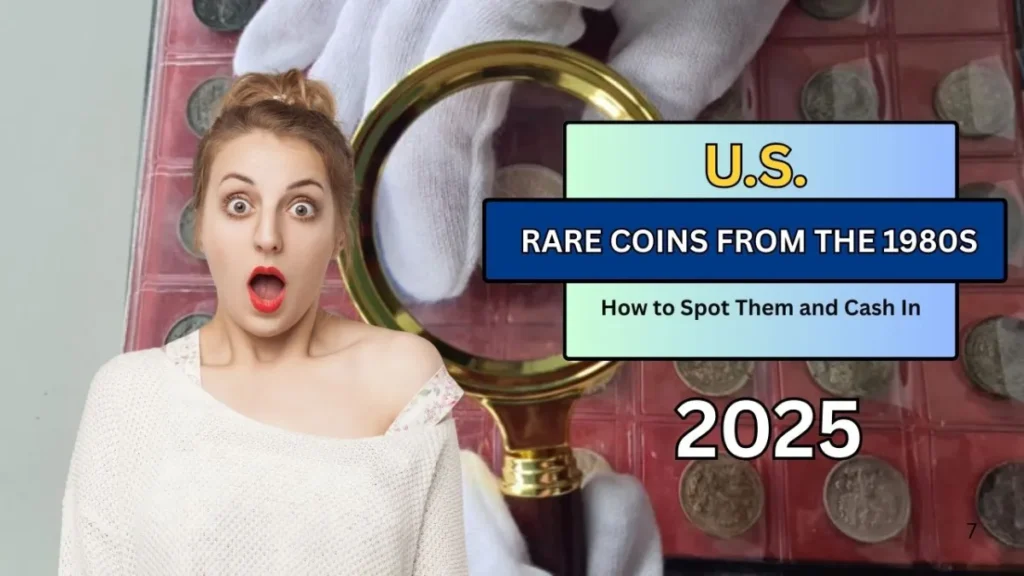Most of us overlook the coins tucked away in drawers, piggy banks, or scattered loose in jars. Yet, hidden among these everyday coins could be a valuable treasure—sometimes worth thousands, even millions. The surprising part? You might already have one without knowing it.
Let’s explore four of the rarest and most valuable U.S. coins that have been discovered in regular circulation. Each one has a unique story, and each could instantly transform your financial outlook.
1. 1943 Bronze Lincoln Wheat Penny
Estimated Value: $100,000 to over $1 million
Why It’s Rare: Wartime minting error
How to Identify: Use a magnet—bronze pennies won’t stick
During World War II, copper was redirected for military use, so the U.S. Mint produced pennies in steel coated with zinc in 1943. However, a small number of bronze blanks from 1942 were accidentally used to strike pennies in 1943. These bronze error pennies are extremely rare—only a handful exist.
If your 1943 penny doesn’t stick to a magnet, it could be one of these incredibly valuable bronze versions. Have it authenticated right away—it could fetch six or even seven figures at auction.
2. 1916-D Mercury Dime
Estimated Value: $1,000 to $15,000+
Why It’s Rare: Very low production numbers
How to Identify: Look for a “D” mint mark under “ONE DIME” on the reverse
The Mercury Dime, known for its elegant design featuring Liberty wearing a winged cap, is a collector favorite. The 1916 issue from the Denver Mint (marked with a “D”) is especially rare, with only around 264,000 minted—a tiny number compared to other years.
Even well-worn 1916-D Mercury Dimes can sell for thousands, so check your dimes for this date and mint mark. You could be holding a valuable piece of history.
3. 1955 Doubled Die Lincoln Penny
Estimated Value: $500 to $2,000+
Why It’s Rare: A minting error caused doubled images
How to Identify: Look for noticeable doubling on “LIBERTY” and “IN GOD WE TRUST”
One of the most famous U.S. error coins, the 1955 doubled die penny shows a distinct doubling of the lettering and date due to a misaligned minting process. You don’t need a magnifying glass to spot it—the doubling is often quite obvious.
If your 1955 penny shows doubled or blurry letters, it could be a prized collectible worth hundreds or thousands to collectors.
4. 2004 Wisconsin State Quarter – Extra Leaf Variety
Estimated Value: $200 to $1,500+
Why It’s Rare: Unintentional die flaw
How to Identify: Spot an extra leaf on the ear of corn (either high or low)
As part of the 50 State Quarters Program, the 2004 Wisconsin quarter features a corn stalk design. Some coins from the Denver Mint mistakenly show an extra leaf on the corn ear—either positioned high or low on the left side—making these varieties special and collectible.
Though more common than other rare coins, these “extra leaf” quarters still sell for significantly more than their face value, especially in great condition.
Why Are Valuable Coins Still Found in Circulation?
Many of these rare coins circulated before their worth was discovered. Others may have been passed down through families or simply mixed into everyday change without anyone realizing their value. Because most people don’t examine their coins closely, hidden treasures like these could be sitting right under your nose.
Tips for Spotting Valuable Coins
- Check dates and mint marks: Certain years and mints (like “D” for Denver or “S” for San Francisco) often indicate rarity.
- Look for unusual features: Mint errors such as doubled images, missing letters, or strange metals can hint at value.
- Use a magnet: This helps identify metal differences, especially useful for pennies like the 1943 bronze variety.
- Get professional help: Have a certified coin dealer or grading service examine your coins before selling to ensure you know their true worth.
Final Thought
You never know what treasure might be hiding in your pocket or change jar. These four rare coins prove that incredible value can sometimes be found in everyday currency, not just gold or silver.
So next time you empty your loose change, take a moment to inspect each coin. That simple penny, dime, or quarter might just be worth thousands—and could turn you into a lucky collector overnight.
